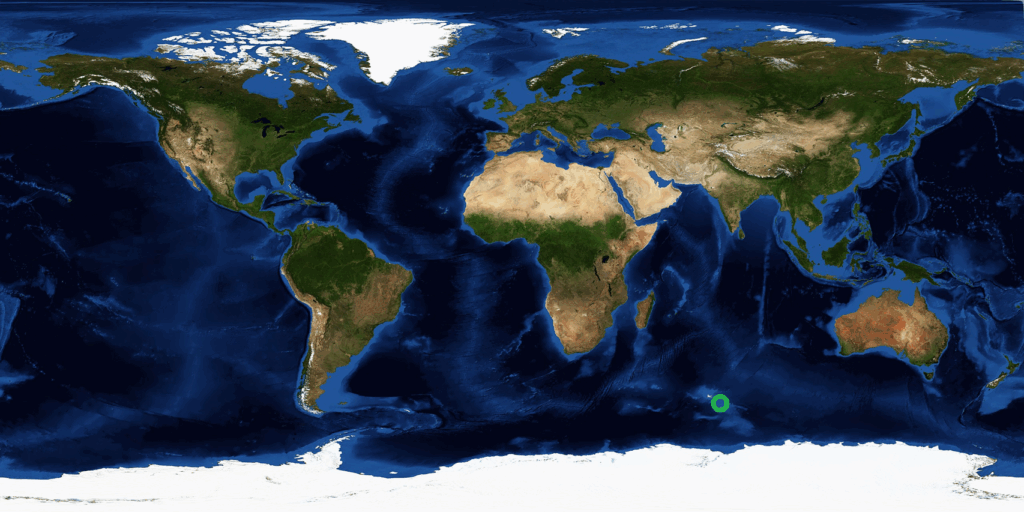
Heard Island & McDonald Islands:
Why Getting There Is Almost Harder Than Going to Space
Situated in the storm-lashed Southern Indian Ocean, 2 400–2 600 miles (≈ 4 000 km) from the nearest Australian port, Heard Island and McDonald Islands (HIMI) are so remote that only a handful of scientists and extreme expeditioners ever set foot there.[1]
1 • Logistical Barriers
- Sea-only access — The territory has no runway, pier or permanent habitation; the only approach is by ice-strengthened vessel.[2]
- Voyage length — A round trip from Fremantle or Hobart takes ≈ 4 weeks: 12–14 days each way at 10–12 kts plus weather buffer.[3][4]
- Permits — Every visitor must secure an Australian Antarctic Division permit; numbers are capped to protect wildlife.[5]
- Weather window — Heavy seas (8–12 m) and katabatic winds limit viable landings to late November–March.[6]
2 • Typical Costs (2025 rates)
Because no commercial service exists, the only options are:
| Mode | Days at Sea | Cost per Person* | Bag Allowance |
|---|---|---|---|
| Berth on “citizen-science” charter (Heritage Expeditions) | 28–32 | US $36 000–40 000 | 1 expedition duffle (20 kg) + 1 carry-on |
| Private yacht/icebreaker charter | 24–35 | US $260 000–400 000 (10–12 pax) |
Soft-bag only, helicopter drop optional |
*Prices compiled from recent Antarctic sailing quotes and East-Antarctic itineraries.[7][8]
3 • Two Forward-Looking Proposals
3.1 Tactical — Establish a Green Long-Range Aircraft Link
Concept: Partner with Boeing / Aurora Flight Sciences to adapt a hydrogen-fuel-cell or hybrid-SAF (sustainable aviation fuel) long-range turbofan capable of 4 300 km over water, equipped with ski-wheel landing gear for temporary blue-ice runway operations.[9]
- Flight time Hobart → HIMI ≈ 6 h (vs 12–14 days by sea).
- Refuel on a floating fuel barge anchored outside marine-protected exclusion zones.
- Hydrogen produced in Tasmania via renewable electrolysis means near-zero operational CO₂.
- Initial CAPEX: US $150–180 m retrofit + US $12 m for seasonal blue-ice runway prep.
3.2 Strategic — Build a Green Re-entry Rocket Hub
Concept: Engage Blue Origin (or similar LOX–methane launcher firms) to deploy a reusable vertical-landing cargo vehicle that can deliver 7 t to orbit and hop sub-orbitally between Fremantle & Heard in under 2 h, powered by methane sourced from green hydrogen + captured CO₂.[10][11][12]
- Turns the island into a polar-orbit staging node for Earth-observation constellations and Antarctic resupply.
- Methane / oxygen engines burn cleaner than kerosene: negligible soot, lower stratospheric NOx.[12]
- Could double as rapid-response humanitarian drop-site along Southern Ocean cyclone belt.
- Long-term CAPEX (launch pad + power-to-methane plant): US $750 m+.
4 • Conclusion
Reaching HIMI today remains a multi-week, high-cost sea ordeal. A tactical hydrogen aircraft bridge could cut the journey to mere hours, while a strategic reusable-rocket hub could transform the islands into a green gateway for polar orbital logistics. Both visions demand bold funding, but each would rewrite the map for science, sustainability, and rapid-response operations in one of Earth’s last truly wild frontiers.
- Travel Noire overview of HIMI remoteness (Aug 2025). 1
- Wikipedia: 2-week sea voyage typical. 2
- Atlas Obscura distance notes (2 500 mi SW Perth). 3
- Wikivoyage: 4 099 km, “really really remote.” 4
- Australian Parks permit info (Macquarie template). 5
- Travel reports: heavy seas & late-summer window. 6
- Heritage Expeditions East Antarctica 2024/25 berth pricing. 7
- Sample Antarctic sailing fare sheet (NatHab pricing). 8
- Boeing hydrogen flight fact-sheet (Aurora SKIRON-XLE). 9
- Blue Origin sustainability statement (LOX-methane). 10
- Reuters: Space Epoch reusable rocket cargo plans 2025. 11
- Space.com: Methane engines vs. kerosene environmental impact. 12
Leave a Reply